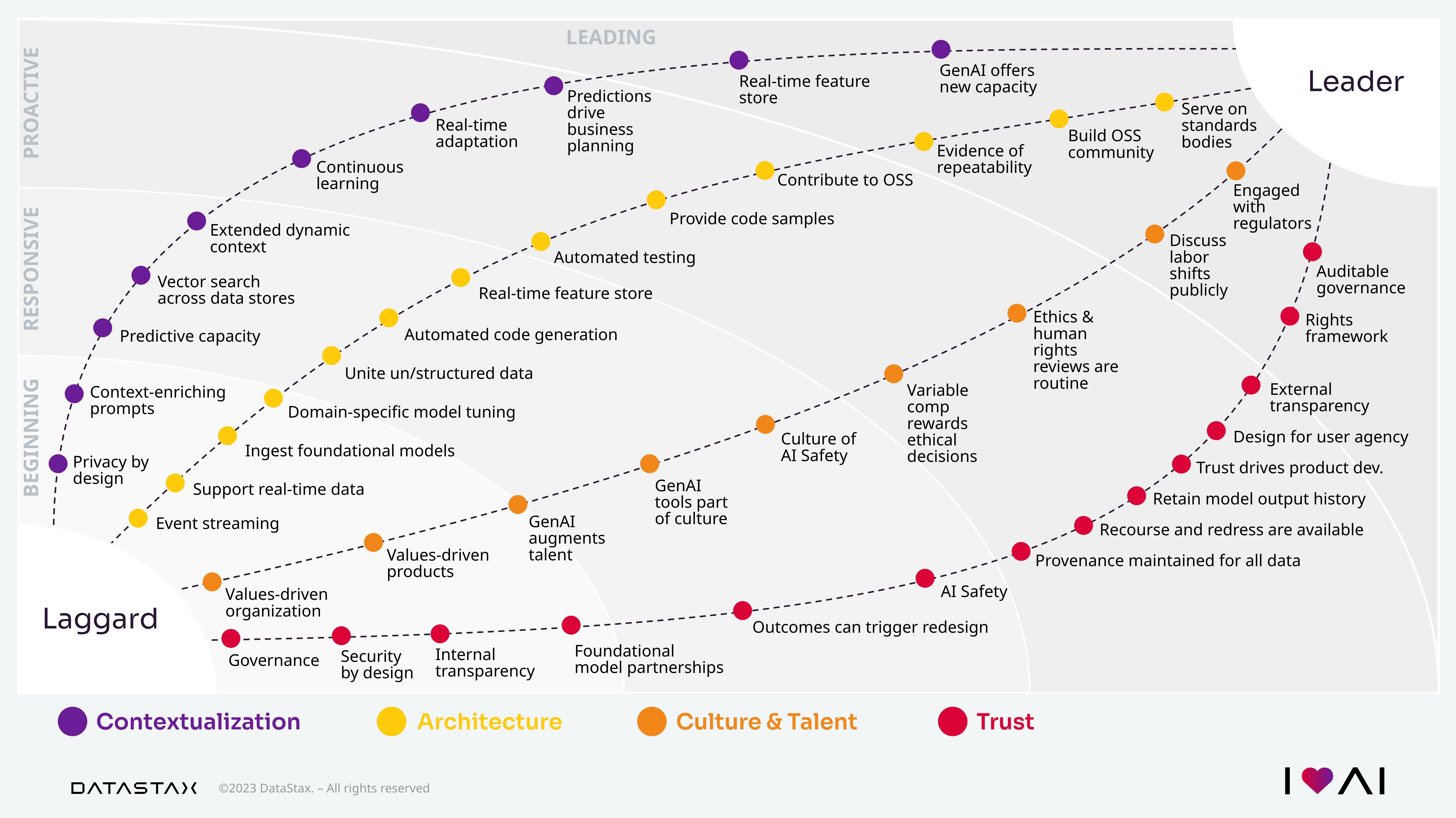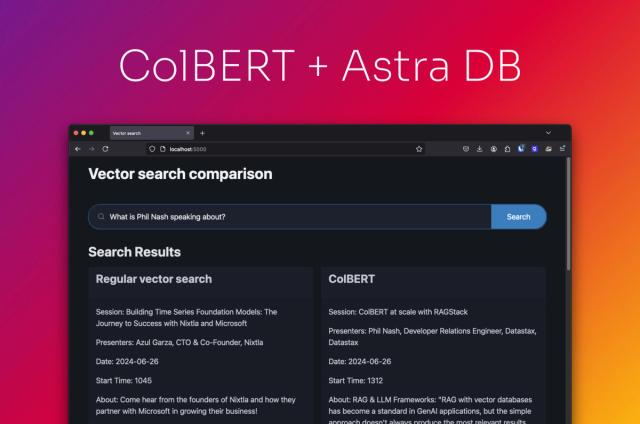The Value of a Generative AI Maturity Model: Unlocking the Power of AI for Business Success

Editor’s note: This post provides a sneak peek at a discussion with the author at I Love AI, a digital DataStax event set to be held on Aug. 23 and 24. The event will provide unique insights into the data platforms and AI solutions that unlock the power of generative AI. Register today!
When a movement as widely impactful as generative artificial intelligence emerges, understanding your organization’s progress—particularly in light of the strides the rest of your industry has made with AI—becomes a critical way to chart your next steps.
To help organizations evaluate the generative AI readiness of their technology stack, plan for the future, and identify investment opportunities, DataStax has developed the Generative AI Maturity Model. It’s composed of four key “arcs”: Contextualization, Architecture, Culture and Talent, and Trust. Each arc contains milestones that guide organizations on their AI journey by providing a structured framework for evaluation and planning.

Contextualization
Context is key to understanding the situation a model is trying to affect. It starts with an important baseline assumption that individuals’ privacy is preserved, and then moves through a series of features, technologies, and capacities that help organizations to add context to models. As we interviewed technology leaders in designing this Maturity Model, we found that organizations will often skip key milestones on this trajectory and make investments further along the arc. For instance, some organizations that use predictive models to drive business planning have not implemented vector search across their data stores, which could enable vastly more functionality from predictive systems. While there’s nothing inherently wrong about this practice, going back and implementing intermediate milestones will most likely amplify the impact of existing investments. Wise leaders will revisit the milestones they’ve missed.
Architecture
Much of the AI revolution comes down to technology architectures supporting advanced and increasingly real-time workloads. If your infrastructure doesn’t support certain features, you’ll be limited in how far you can go with AI. Some leaders have questioned event streaming being the first milestone on the architecture arc; this is merely a recognition that real-time AI requires real-time messaging, such as Apache Pulsar. In fact, the entire data pipeline can’t be real-time without event streaming. We’ve also heard that uniting structured and unstructured data should occur sooner, as that is a foundational capacity. However, despite not having that ability, we saw organizations moving forward with using foundational models and tuning models based on domain-specific knowledge.
Culture and talent
People and culture must be a core consideration for any ambitious AI initiatives. Not only are workers afraid to be replaced by technology, they’re also key to making technology transformations possible. When organizational cultures are grounded in widely held and reinforced values, the cultures are generally more capable of supporting workers through this transition. And the transitions that we’re seeing are not about widespread job loss; they’re about companies that have workers with AI replacing companies that have workers without AI. This is why much of this arc guides leaders through integrating AI with existing processes and incentivizing increased transparency while encouraging a rights-based approach that maximizes individual agency and group cohesion.
Trust
At the end of the day, if an organization loses trust as they pivot to AI, it will be difficult to recover. Trust can be established, built, maintained, and eroded. Starting with governance establishes a level playing field where trust is possible—but not a given. Ensuring security and providing transparency to internal stakeholders are necessary conditions for expanding trust. Leveraging partnerships and stakeholder relationships extend a trust halo and demonstrating actions that honor commitments builds trust. Eventually, organizations realize they can extend their reputation for trust beyond existing customers and use it as a powerful force to attract new customers. This is critical in the age of AI where technology can be used for a variety of purposes; having a trusted relationship with the market will be a differentiator.
A guide to unlock generative AI potential
The Generative AI Maturity Model is an invaluable tool for organizations seeking to thrive in the generative AI landscape. With its focus on contextualization, architecture, talent, and culture, and trust, the model acts as a guide to unlock the true potential of AI. By leveraging the model, technology executives can plan for the future, foster a culture of experimentation, and identify investment opportunities that drive growth and success. As AI mastery becomes the essential market differentiator, the model empowers organizations to stay ahead of the curve and achieve long-term leadership in the generative AI era. Embrace the model, and seize the transformative power of AI for your business today.
Register for I Love AI to learn more about the Maturity Model and a wide range of other critical AI topics.




